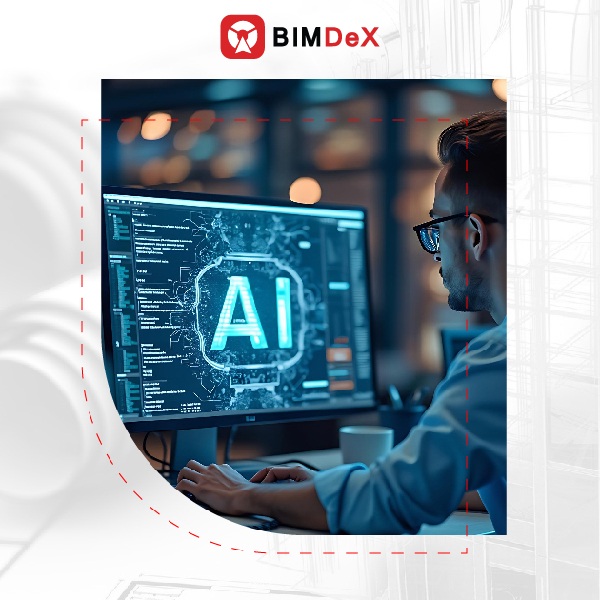Two technologies that are constantly receiving the limelight in recent times are Artificial Intelligence (AI) and Machine Learning (ML), that surely are not just fancy terms but innovations that has the eminence to change and improve how information were dealt earlier.
AI primarily can be represented as an imitation of human intelligence in machines that can transform the way we interpret, process, and analyze data that provoke the machines to perform actions that often require human intelligence and involvement.
Machine Learning comes in the branch of AI that enhances the systems and machines to learn from the provided data, analyze the data patterns and create routes with static programming.
These two technologies, as they are creating prominent breakthroughs in vital industries, can render their eminence to the realm of Computer-Aided Design (CAD). CAD software solutions are the cornerstone for the Architecture, engineering and manufacturing industries allowing the users to create ideal designs and models. With such eminence in-house one major limitation it has with model conversion is interoperability. Certain CAD software solutions can have hindrances with converting their models with other CAD and design software solutions, often has issues like missing out on essential model information and many more compatibility concerns.
While looking out for possibilities to avoid the interoperability issues, here are the solutions offered by AI and ML for CAD data interoperability, along with better ways and techniques for model conversion.
Understanding Artificial Intelligence (AI) and Machine Learning (ML)
Artificial Intelligence
As we said earlier Artificial Intelligence (AI) is an ideal innovation that emerged as a supplement for tasks that often-required human indulgence. While it is said AI can replace humans, it cannot completely replace human aspects but can assist in various concerns that need human intelligence. AI can act as a simulator as it encrypts human intelligence in machines and assists in various aspects like learning, problem solving, decision-making and more. This innovation can be used in vital tasks that often are repetitive and complex.
Machine Learning (ML)
Machine Learning is the innovation that is actually a subset of AI that works based on datasets. ML models run based on the fed datasets and are used to analyze the models with their behavior patterns. This study can assist in predicting the flow of the model with enhanced precision. This all happens without ideal programming and ML primarily works with high end accuracy as the models are trained on vital datasets.
Importance of CAD Data Interoperability
CAD software solutions, being a prominent source of design and model development, often has the limitations of having ideal interoperability; these essential tools have their own file formats, unique structures and standards. When such unique software connects with other CAD software for data conversion, compatibility issues arise and delays the whole process.
The incompatible CAD software solutions without interoperability factors leads to more manual process, that is, it requires extra human interaction where they have to provide more inputs for model translation process, and this affects the most important part of ideal collaboration. Additionally, the incompatibility can limit CAD software users to exchange and obtain the accurate data from the other software leading to more inaccuracies and misinterpretations.
Check Out: How to Convert CAD Files Without Data Loss
Ideal Impacts of AI and ML in CAD Data Interoperability
AI and ML technologies are making impeccable improvements in diverse industries; however, the same eminence can be applied to improve the CAD data interoperability, removing the limitations that were prevailing earlier. Here are the significant impacts of using AI and ML in CAD data interoperability.
➡️ Automated Data Translation
When considering automated data translation from one CAD software to another, there are vital CAD conversion tools to carry down the function but often there is the primary issue of interoperability, but implementing the AI and ML tools for the design translation process can enhance the process better. Since CAD conversion with incompatible factors requires manual intervention to convert the models, the AI and ML algorithms can be trained to recognize the CAD model formats and convert them to respective software formats automatically with essential settings without misconceptions.
AI and ML tools can learn from the huge datasets and analyze the patterns of each CAD format and map it into the other respective format with all the inclusive information of the model like the metadata, geometry, dimensions and ideal properties.
➡️ Simplification with AI and ML
CAD files and models often are a huge cluster of data that includes the model properties, geometry and metadata. This eventually increases the complexity of the model, and this can be one prominent factor for inefficient interoperability. AI tools can be a remedy for this situation as they learn the model and analyze these data from the model unlike other CAD conversion tools.
AI and ML tools can be trained to learn the CAD models before conversion and resolve the model information. AI and ML tools can impact the model conversion with ideal simplification as the tools can be used to simplify the level of details with predefined data sets. ML can assist the engine to analyze the CAD models and create a simplified version of the model, by excluding the model components with the given predefined settings.
With consistent training the technologies can understand all the data factors including the metadata and confidential metadata of the CAD models can be hidden or removed and this can save a lot of human effort.
➡️ Smooth Data Mapping and Contextual Understanding
Each CAD software has their own conventions when it comes to dealing with the in-house models; for example, a CAD software will have a different convention to name the model component, and this might be different in another software to which the model needs to be converted. At this case, the chance of losing the context is high and it becomes hard to locate the data exactly on the recipient software.
AI and ML tools play a pivotal role here in reading the models and understanding the context of the model data. Since the tools completely read the data, it becomes easy to locate the components easily even if they are named differently in another software. With this the CAD software solutions can find better interoperable ways where they can locate the model components and make sure that all those components are editable after conversion.
➡️ Significant Prediction and Detection of Design Errors
AI and ML technologies can assist in detecting and correcting potential design errors, during the development process and also after conversion. Usually, when the CAD designs are converted without proper routes of interoperability and compatibility, there can be slight differences in the designs while they are compared. Sometimes, the errors cannot be noticed and that also can cause major problems during manufacturing and installation stages.
AI and ML’s error detection perspective assists a lot in this aspect, wherein the algorithm can be made to detect the errors, design mistakes and mismatches. ML engine can be trained to compare the source CAD model with the converted model and give a detailed report of the glitches that occurred while design translation. While converting more complex models, this solution can be the preferred remedy as it saves more time and effort spent in rectifying errors.
Explore: Beginner’s Guide to Understanding CAD Data Exchange
Conclusion
We are evidently seeing the innovative technologies of AI and ML taking up the space, improving vital aspects of various industries; in such case, understanding the eminence that the technologies render to CAD data interoperability is currently inevitable. AI and ML are sure shots in the technical world and aligning them with the designing, manufacturing and engineering industries will eventually yield potential impacts with precision and accuracy. Hope this information has provided you with the essential aspects of AI and ML’s intersection with CAD data interoperability.


































